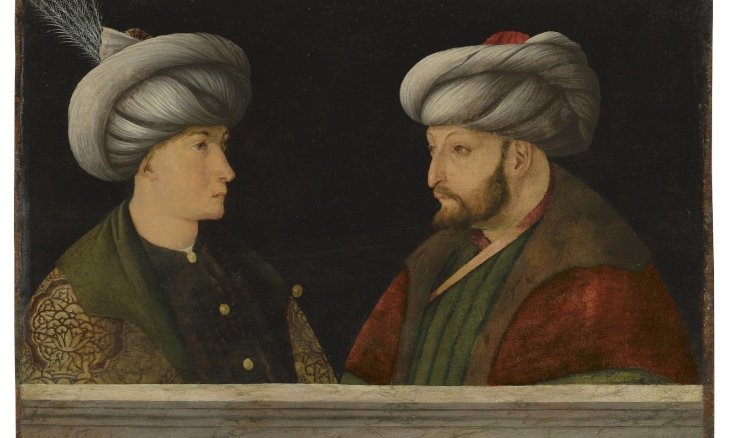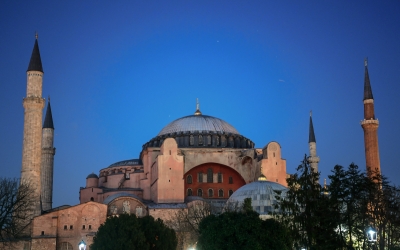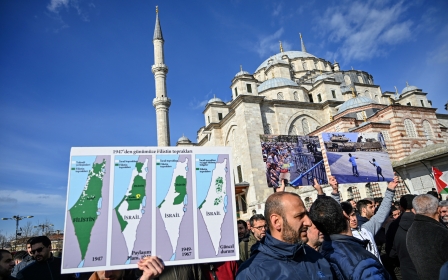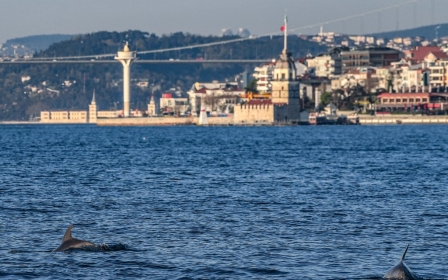Mehmed the Conqueror painting returns to Istanbul, sparking praise and debate

A Renaissance portrait of Sultan Mehmed II, better known at Mehmed the Conqueror, has been purchased by the Istanbul Metropolitan Municipality at a Christy's auction in London, sparking praise, discussion and criticism in Turkey.
The artwork, painted by the Venetian painter Gentile Bellini in the 15th century, depicts Mehmed alongside another apparently younger man, whose identity has long been the subject of debate.
Istanbul's mayor Ekrem Imamoglu said he was "very happy" with the purchase, which sold for $1,172,803.50, according to TRT World.
'Certainly the place where a really important Bellini painting of Fatih Sultan Mehmet belongs - a memory of our own - is Istanbul'
- Ekrem Imamoglu, Istanbul mayor
"I was very excited when I heard it was on sale and I immediately instructed my friends to review the process," he said in a statement on Friday.
"Certainly the place where a really important Bellini painting of Fatih Sultan Mehmet belongs - a memory of our own - is Istanbul."
New MEE newsletter: Jerusalem Dispatch
Sign up to get the latest insights and analysis on Israel-Palestine, alongside Turkey Unpacked and other MEE newsletters
The painting is an oil on panel portrait, 33.4cm in height and 45.4 cm in width. The figure depicted on the right, Mehmed II, was responsible for capturing Constantinople in 1453 and transforming a fledgling Turkish state into an empire. Constantinople was officially renamed Istanbul during the founding of the modern Turkish republic.
The identity of the figure on the left has been up for speculation. Some have suggested it portrays one of the sultan's sons, such as Cem Sultan. Others have suggested he might be a European dignitary due to being clean-shaven, which would have been unusual for an Ottoman official.
Mixed feelings
Reactions to the purchase of the painting were mixed.
Many people responded by praising Imamoglu, one of the opposition CHP party's most prominent politicians, for bringing the painting to Istanbul.
"Very nice move," tweeted singer Atilla Tas. Mansur Yavas, the CHP mayor of Ankara who was elected last year along with Imamoglu, also tweeted "congratulations" to the news.
Vanessa H Larson, a journalist with the Washington Post, said the move was "rare news unifying Turks across political spectrum".
Pro-government journalist Cem Kucuk also praised what he called a "beautiful move".
"We criticise Ekrem Imamoglu. We will criticise. But it is an important job to buy the portrait of Fatih [Conquerer], one of the most important sultans of the Ottoman Empire," he wrote.
However, some were critical of Imamoglu's decision to spend more than a million dollars on a painting at a time of financial difficulties exacerbated by the coronavirus crisis.
The pro-government newspaper Yeni Akit accused Imamoglu of hypocrisy for criticising the excessive spending by the former AKP administration in Istanbul.
The conservative comic strip Misvak also tweeted a picture portraying Imamoglu holding up the painting while Istanbul floods, a reference to the fierce storms that struck the city earlier this week:
Ekrem, Fatih Sultan Mehmet Han’ın portesini satın almış.Gelecek seçime kadar bu icraatle geçinecekler.İcraatlerinizi anlatın dediğimizde; Eee fatihin portresini satın aldık,Ee icraatler; Eee icraat; portre dedik ya. Herşey çok güzel oluyor! #HayırlıCumalar pic.twitter.com/0FduYFKf2u
— Misvak (@misvakdergi) June 26, 2020
"'How many low-income citizens would be helped with this money?' is a legitimate question and does not have to contain false intent," tweeted economist Gunes Asik.
"I am happy that this work was brought to Istanbul, but if I was the mayor I would spend this resource on people."
Imamoglu batted away accusations of "waste" at a news conference on Friday, saying he felt the work of art to be "very valuable and that I feel it belongs to our country".
Human rights activist Arlet Natali Avazyan accused critics of the move of hypocrisy themselves, pointing out that more than $4m had been spent on a less than successful concert organised by the presidency just earlier that month.
Political move
The purchase of the painting also has significant political connotations.
The Justice and Development Party (AKP) government has long been promising to convert the Hagia Sophia building in Istanbul into a mosque, a move that would be highly controversial both within Turkey and internationally.
The Hagia Sophia was originally built by the Eastern Roman Empire as a cathedral, but after the Ottoman conquest it was converted into a mosque, before being turned into a museum in 1931 by the government of Mustafa Kemal Ataturk.
The decision to purchase a painting of Mehmed - the man responsible for converting the Hagia Sophia into a mosque - by a mayor belonging to the opposition Republican People's Party (CHP), the party of Ataturk who converted into a museum, has raised some eyebrows.
Louis Fishman, author and commentator on Turkish affairs, said the move was clearly designed to undermine pro-government critics.
"There's a great deal of political expediency that comes with this," he tweeted.
"Remember this is the mayor the government and its press is always try to undermine. Yet this huge moment of pride has left pro-government press exuberant. So a side note to this is it's a political slam dunk by Imamoglu."
Some commentators criticised those who praised the purchase of the painting while opposing the transformation of the Hagia Sophia into a mosque.
Journalist Nedim Sener said people should stop complaining about the decision to buy the painting.
"The portrait of Fatih Sultan Mehmet returns to the city he conquered exactly 540 years later. The opening of the Hagia Sophia is coming," he wrote on Twitter.
"Stop fighting, enjoy it."
Middle East Eye delivers independent and unrivalled coverage and analysis of the Middle East, North Africa and beyond. To learn more about republishing this content and the associated fees, please fill out this form. More about MEE can be found here.





